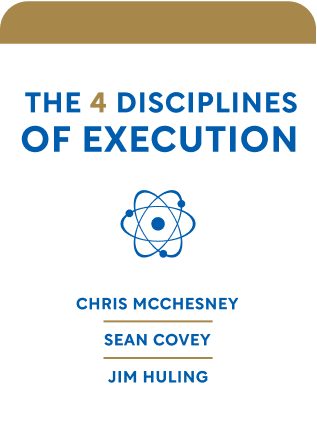

This article is an excerpt from the Shortform book guide to "The 4 Disciplines of Execution" by Chris McChesney, Sean Covey, and Jim Huling. Shortform has the world's best summaries and analyses of books you should be reading.
Like this article? Sign up for a free trial here .
Are you trying to implement the 4DX principles? Do you have questions about what you’re doing wrong or how you can improve?
The 4DX principles aren’t always straightforward. These frequently asked questions can help you address common concerns shared by others that have gone through the 4DX process.
Read on for some frequently asked questions about the 4DX principles and process.
4DX Principles: FAQs
The following frequently asked questions address the 4DX principles and process as a whole. The questions are sorted into thematic categories.
Success and Failure
We tried 4DX for a year and didn’t get results—why?
A WIG is a strategic bet—it’s not a guarantee. Sometimes you won’t achieve a particular WIG. That’s not a failure of the 4DX method. Likely, the failure had something to do with an outside force, such as your competition making a better strategic bet. For example, an insurance company chose a WIG about a new policy for a new market. They worked very hard to move their lead measures, but the lag measures never moved because a competitor had come up with a more economical product and delivered it electronically.
We’re going to reach our WIG before our time is up—what should we do?
Don’t change the WIG—your team will lose their engagement. They’ll feel like the finish line is always moving and it’s impossible to reach. Do, however, keep seeking higher performance.
There are three scenarios that could create an exceeded WIG:
WIG was initially set too low
In this case:
- Congratulate the team.
- Take responsibility for setting the WIG too low.
- If possible, set a new WIG at a higher level.
WIG was set properly but the team performed outstandingly
In this case:
- Congratulate the team.
- Declare the WIG achieved.
- Set a new WIG for the remaining period of time.
WIG was set properly and you got a windfall
In this case:
- Declare the WIG achieved.
- Move on to a new WIG immediately, otherwise you’re shortcuting the adoption of 4DX.
When should you change a lead measure?
Don’t change a lead measure too quickly. Remember that the 4DX process contains a plateau at the adoption stage. If you’re seeing the lag measure become static, the lead measure might not be a dud; you may simply have reached a plateau. Before changing anything, assess:
- Is the lead measure affecting the lag one?
- Is the lag measure only moving a little? In this case, you don’t necessarily need to change the measure. Instead up the performance standard. The initial standard won’t create results forever. To increase performance:
- Increase the lead measure numbers. For example, if your lead measure is to greet a certain number of customers a day, increase the number
- Increase the quality of the lead measure activity. For example, when your team members greet customers, challenge them to do it well. You can work on this by creating a script, practicing during and meeting, or asking the strongest members of the team to coach the others
- Increase the scope of the lead measure. If a lead measure is now a habit, tweak it to include something related. This can increase results a lot and is easier to implement than a brand-new lead measure. For example, instead of just greeting customers well, escort them to the product they want.
- Is your scoreboard accurate?
- Has the team been achieving the lead measure for at least twelve weeks in a row? (This is the minimum time to form a habit.)
- Will the team keep performing at the same level if you drop the lead measure?
My lead measure is moving but my lag measure isn’t—why?
There are three possible reasons:
- Time. It takes a while for the lead measure to move the lag measure.
- Inaccurate scoreboard. If the team isn’t accurately recording their performance on the lead measure, the lead measure may appear to be moving when it actually isn’t. (This is a particular danger if compensation is tied to lead measures.)
- Lead measure isn’t predictive. Consider this reason last—most people jump to this conclusion.
If you’ve carefully considered the above three reasons and the lead measure really isn’t moving the lag one, reflect on your assumptions. Some organizations have beliefs that had never been tested until now. It could also be that external conditions have changed a lot and lead measure is no longer relevant.
Fitting 4DX Principles Into Existing Systems
How do I align compensation for 4DX principles?
It depends on your organization, but the most important thing is to reward the right people, not the people exhibiting the right behaviors.
If your existing compensation model already rewards performance against objectives, then it makes sense to align compensation to achieving the WIG. This will also have the benefit emphasizing that 4DX is an important behavioral standard.
If compensation isn’t aligned that way, it’s still a perfectly fine idea to align compensation to achieving WIGs.
Be careful about typing compensation to lead measures—this could result in an inaccurate scoreboard.
How does 4DX fit into existing performance management systems?
Again, it depends on your organization’s system. 4DX principles of accountability will integrate well into any system that already uses goals and time frames.
Personal development can help achieve a WIG. For example, certain WIGs might require people to learn new skills.
You could replace annual performance reviews with WIG sessions, or change your current performance review session to focus on a person’s WIG contribution. Or, simply use your existing system in addition to strictly adhering to Discipline 4.

———End of Preview———
Like what you just read? Read the rest of the world's best book summary and analysis of Chris McChesney, Sean Covey, and Jim Huling's "The 4 Disciplines of Execution" at Shortform .
Here's what you'll find in our full The 4 Disciplines of Execution summary :
- The 4 disciplines that can make any strategy a successful reality
- Why a great plan falls apart when you don't think adequately about execution
- The 6 steps you need to scale the 4DX model across an entire organization






